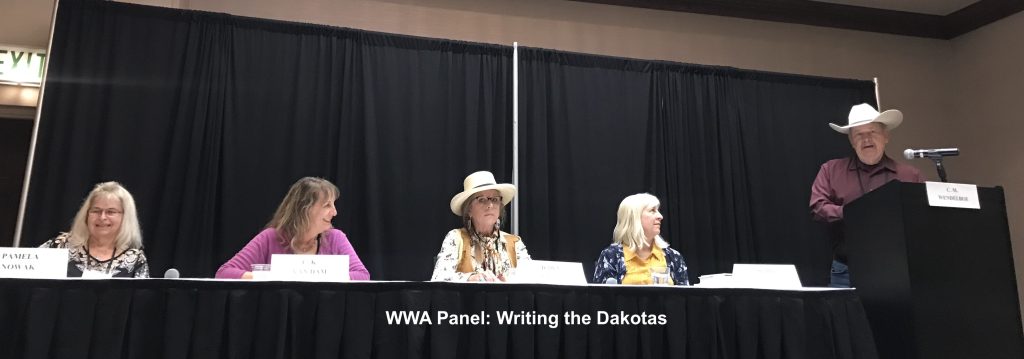That was the title of a panel discussion at this year’s Western Writers of America convention. And, even though I was a first-time attendee, I was asked to participate and provide a South Dakotan’s take on Writing Dakota.
Panel members discussed how the Midwest’s particular traits become part of the story. The land itself often plays an integral part in the story line. (A collection of articles in Old Trails and New Roads in South Dakota History does an excellent job of defining some of the state’s unique characteristics.)
The land is a topic that’s close to my heart. Proving Her Claim is set in Dakota Territory just after the Civil War. It’s a time when pioneers where flooding into the western lands, pushing native tribes into smaller and smaller tracts of land.
For my part of the panel, I explained how the prairie became a character in my novel. In her first encounter with Two Hawks MacKenzie, Anna Olson compares her childhood home with her new home.
“I grew up on the shore of Lake Michigan. The Bay is huge and we had lots of green trees, hills and valleys.” Her eyes swept the flat, endless expanse of prairie. “Out here, it seems the horizon goes on forever. It’s beautiful, so wide open, and so wild.”
As the story progresses, Anna comes to love the Dakota plains, from the endless horizons to the prairie grasses and flowers.
If springtime on the plains was a riot of purple, pink and yellow prairie flowers, then autumn’s colors were a golden hue. The waist-high grasses, now dried and brown, waved in golden ripples across the endless expanse of Dakota Territory.
Not all the panel members wrote about Dakota Territory. Several of the writers had books set in contemporary times. But even today, Dakota’s unique geography, from the flat lands east of the Missouri River to the rugged terrain of western Dakota, lends itself to story telling.
Panel members didn’t discuss just the geography and terrain. The panelists also provided information on how to research Dakota’s history through insurance records and historical documents.
And the “Riding” portion of the panel’s title? Yep – several of the panelists live and work on ranches. They’re writing and riding Dakota.

